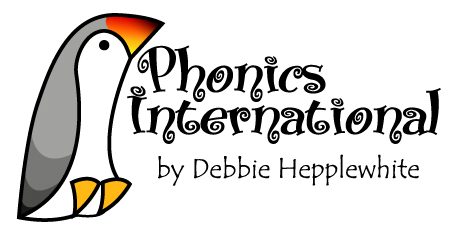Important Resources and Links (click titles to view)
The approach to reading material for schools using the Phonics International programme.
Guidance for reading with the Floppy’s Phonics programme
Reading Purpose and Choice of Texts for Beginning and Developing Readers
Reading and your child – at school and at home
Summary of main features of phonics, reading and spelling/writing instruction
Setting-up, and use of, the essential ‘Phonics Folder’ for every learner
Model of the three phonics core skills and their sub-skills
Three Posters for Phonics Routines – Reading, Spelling, Handwriting
Guidance for Phonics Routines
Poster for Teaching Incidental Phonics for Reading
Poster for supporting spelling in the wider curriculum
Reflecting on the ‘Teaching and Learning Cycle’
Live Webinar Training for Phonics International
Printable PDF for ‘Live Webinar’ training for ‘No Nonsense Phonics Skills’
Extracts from the Final Rose Report – March 2006
Phonics and the 'Year One Screening Check' in England
High Frequency and Tricky Word Posters
Useful high frequency and tricky words MINI POSTERS (PDF)
Here are a selection of posters (A4 size) for your main phonics reading, spelling and writing DISPLAY WALL. These are taken from a specific strand of over 200 systematic WORD BANK posters already provided throughout the 12 units of the Phonics International programme entitled MINI POSTERS. Whilst this selection of over 40 posters is offered freely, please consider the value for money and the level of support offered by access to the full systematic Phonics International programme! These posters can be used with any synthetic phonics programme. Note that the Phonics International programme can be used to supplement or complement any synthetic phonics programme.
High Frequency and tricky word SPELLING POSTERS (PDF)
Here are 15 posters (A4 size) focusing on the spelling of a selection of high frequency (common) words. These posters are newly designed (May 2012) and they are additional to the existing Phonics International programme’s bank of resources. The font on these posters is the new ‘Debbie Hepplewhite’s print font’. Of course these posters can be used with any synthetic phonics programme.
More tricky words’ posters (PDF)
Alphabetic Code Charts
See the full range of Alphabetic Code Charts adapted for North American Accents
USA version of alternative Alphabetic Code Frieze Posters (PDF)
Canadian version of alternative Alphabetic Code Frieze Posters (PDF)
Full range of Alphabetic Code Charts available from Debbie’s AlphabeticCodeCharts.com website
The Spanish Alphabetic Code Chart
(This is interesting to compare with the English Alphabetic Code)
An English Alphabetic Code Chart including detailed information about synthetic phonics
(ideal for student teachers)
Miscellaneous
Debbie’s Phonics Teaching Tips (PDF)
Video of Debbie’s Top Teaching Tips (Oxford University Press)
Lesson Plan and Evaluation Proforma (PDF)
Flashcards of Alphabet Letter Shapes in Different Fonts with suggestions for use (PDF)
Suggestions for Teaching Joined Handwriting (PDF)
See our massive range of free Alphabetic Code Charts for teachers and learners – click HERE
